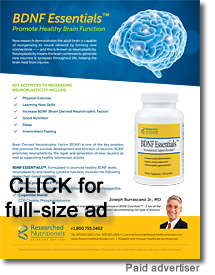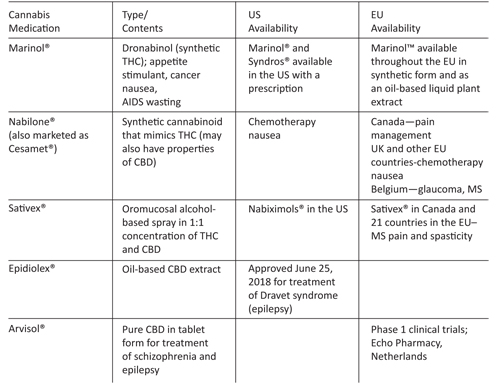Page 1, 2
Options for Pain Management
Cannabis and Opioids in Combination
Opioid therapy is often an effective treatment for severe pain, but all opiates have the potential to cause nausea, suppress appetite, and almost always cause severe constipation. The intensity and duration of this nausea can cause enormous discomfort and additional suffering, leading to malnourishment, anorexia, wasting, and a severe decline in a patient's health. Some patients find the nausea so intolerable that they are inclined to discontinue the primary pain treatment, rather than endure the nausea.
 Associated weight loss (cachexia) by itself is an independent risk factor for morbidity and mortality. This means that in any disease, significant weight loss will decrease a patient's life expectancy and patients will experience more toxicity from any treatment they receive. This is especially true of cancer patients. Cannabis medicine is widely recognized as an effective antidote for cachexia. Associated weight loss (cachexia) by itself is an independent risk factor for morbidity and mortality. This means that in any disease, significant weight loss will decrease a patient's life expectancy and patients will experience more toxicity from any treatment they receive. This is especially true of cancer patients. Cannabis medicine is widely recognized as an effective antidote for cachexia.
Inhaled cannabis provides almost immediate relief from nausea with significantly fewer adverse side effects than orally ingested Marinol ® (synthetic THC ). Inhalation allows the active compounds in cannabis to be absorbed into the blood stream with greater speed and efficiency. For this reason, inhalation is an increasingly common, and often preferable, route of administration for many medications.
Cannabis Medicine
The cannabis plant produces more than 400 different chemicals and compounds, which include at least 113 cannabinoids. Another 140 of the plant's constituents are aromatic hydrocarbons known as terpenes, demonstrated to provide therapeutic effects in the treatment of numerous health disorders, such as cancer. Additional constituents of interest include the following:
- CBD (cannabidiol) and CBC (cannabichromene) – The second and third most common active compounds in the plant, both exhibit anti-inflammatory and analgesic actions, although weaker than those of THC;
- Beta-sitosterol – A non-cannabinoid ingredient found in cannabis that has been shown to decrease inflammation and edema in skin treatment;
- Cannaflavin A – A unique flavonoid found only in cannabis, cannaflavin A inhibits the inflammatory molecule PGE-2 thirty times more potently than aspirin;
- Beta-caryophyllene – A cannabinoid found in many other plants, as well as cannabis, with strong anti-inflammatory properties and no noticeable side effects, beta-caryophyllen is the most commonly consumed USA FDA-approved cannabinoid in food.

Research has shown that many of the individual cannabinoids, terpenes, and flavonoids have complementary qualities, as well as unique therapeutic and anti-inflammatory effects. A review of more than 20 clinical trials on cannabis and cannabinoids concluded that whole plant cannabis and extracts are superior to oral THC for the treatment of pain, given their ability to mitigate anxiety, nausea, vomiting, and other side-effects of pain. Utilization of the whole plant has been shown conclusively to provide more effective pain control properties in combination than THC alone.
Page 1, 2
References
1. CDC. Provisional drug overdose death counts. Atlanta, GA: National Center for Health Statistics, Centers for Disease Control. Available at: https://www.cdc.gov/nchs/nvss/vsrr/drug-overdose-data.htm. Accessed 08/01/2018
2. Bradford AC, et al. Association between US state medical cannabis laws and opioid prescribing in the Medicare Part D population [published online April 2, 2018]. JAMA Intern Med.
3. Boehnke KF, Litinas E, Clauw DJ. Medical cannabis use is associated with decreased opiate medication use in a retrospective cross-sectional survey of patients with chronic pain. J Pain. 2016;17(6):739-744.
4. Reiman A: Patient Profiles: Medical cannabis patients and health care utilization patterns. Complementary Health Practice Review. 2000;12:31-50).
5. Mikuriya T. Medical marijuana in California, 1996-2006. O'Shaughnessy's: Journal of the California Cannabis Research Medical Group. Spring 2007: 2-8-10.
6. Wilkie G, Sakr B, Rizack T. Medical marijuana use in oncology: a review. JAMA Oncol. 2016 Mar 17.
7. Parker LA, Rock EM, Limebeer CL. Regulation of nausea and vomiting by cannabinoids. Br J Pharmacol. 2011 Aug;163(7):1411–1422.
8. HelloMD with Brightfield Group. Usage study. 2017. Available at: https://www.hellomd.com/health-wellness/5980e279f15fe13b757557d3/largest-cbd-usage-study-published-by-hellomd-with-brightfield-group. Accessed 08/01/2018.
9. Grant I, Cahn BR. Cannabis and endocannabinoid modulators: Therapeutic promises and challenges. Clinical Neuroscience Research. 2005; 5(2-4):185-199.
10. Wilsey B, et al. Low dose vaporized cannabis significantly improves neuropathic pain. J Pain. 2013 Feb;14(2):136–148.
Robert Gorter, MD, PhD, holds degrees from the University of Amsterdam Medical School in the Netherlands, UCSF Medical School, and a PhD from the University of Witten/Herdecke in Germany. For approximately 10 years, he worked as a physician and researcher in the treatment of AIDS patients at UCSF. Those efforts provided the foundation for research and clinical practice in immunotherapy and the development of effective nontoxic cancer treatment, today known as the Gorter Model. This approach was applied at his treatment center, the Cologne Medical Center, in a teaching hospital in Germany, and at treatment centers he developed in Cairo, Egypt, and Istanbul, Turkey. He is coauthor of Fighting Cancer: A Nontoxic Approach from North Atlantic Press and a forthcoming book, Cannabis as Medicine.
Consulting Services
Dr. Gorter is available to physicians and patients to discuss the suitability and applications of cannabis medicine for a range of medical issues, based on his clinical experience working with thousands of patients with AIDS, cancer, and other serious health conditions. While he cannot give specific medical advice to individuals who are not his patient, he can speak to his experience with others who have dealt with similar conditions. Consultations with Dr. Gorter and colleagues can be schedule through his website: www.CannabisAsMedicine.eu |
![]()
![]()
![]()
![]()







